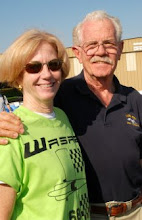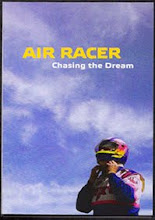 |
| N348LC Flt 4, Pilot: Justin Gillen, Chase Pilot: Elliot Seguin (GT-400) |
N348LC Test Plan
7-28-2015
Owner: Larry Channel
Lancair Legacy
Aircraft MSN: L2K-212
Engine: Cont IO-550
Engine MSN: IC-6584
Propeller: Hartzell
Prop MSN: JN286B
Location for testing: Apple Valley Airport, Mojave Air and Space Port
Designated Airworthiness Representative: Carl Gerker
Risk Statement:
Flight test is risky and this aircraft is complex and expensive. While Wasabi Flight Test plans a deliberate, responsible, and risk adverse approach to testing the aircraft; there are inherent risks to the aircraft that cannot be avoided. We suggest hull insurance coverage for the value of the aircraft during the phase one flight test. Wasabi Flight Test is not to be held responsible for damage to the aircraft during phase one flight test.
Project Summary:
The intent is to perform the testing required to complete the phase one flight test as directed by paragraphs 3, 4, 10, and 15 from the representative operating limitations as described AC 90-89A and outlined in the following test plan summary. This will include 40 hours of flight test to be performed by Wasabi Flight Test pilots. At the end of the test phase, a report will be generated for the owner describing to what flight conditions the airplane has been demonstrated and the characteristics or phenomena observed at those conditions. Wasabi Flight Test pilots are neither check-out pilots nor CFIs, and as such make no assertions in transitioning the owner into said aircraft upon completion of phase one operations.
Aircraft overview:
The Lancair Legacy is a two seat, low wing, aircraft with 40° flaps, tricycle retractable landing gear and a low cruciform tail. The stock airframe is powered by a continental IO-550. This particular aircraft has never flown before.
Test Plan Summary:
AC 90-89A will be used as a reference for the flight test program. Based on those recommendations the test plan is listed below. This is a guide the actual order of testing will depend on how everything comes together.
Hours 1-3
Per Chapter 3, Section 4 of AC 90-89, the initial flights, hours 1-4, have two objectives: 1. confirm engine reliability, and 2. confirm basic flight characteristics. These initial flights will be done at power settings to facilitate new engine break in, with flight times less than 45 minutes. Typically these flights are spent diagnosing cooling problems. Initially the envelope will be cleared from VREF to VA (90 KIAS to 170 KIAS, or to 1.3x VS) and 0.5 G to 2.5 G. This envelope will provide ample room to evaluate gross handling issues without stressing the engine early in the break-in process. The envelope will be cleared using 3 axis stick wraps in 5 knot increments. The flap and gear systems will also be validated during this initial phase of testing. Inspections between flights will be significant with full cowl removal after every flight.
Hours 4-10
Per Chapter 4, Section 3 of AC 90-89, these flights will be used to build on the data established by the first three hours and start expanding the flight test envelope. This time is also used to begin operational type testing and validation. In particular, climbs and descents will be used to check the engine reliability and installation effects in these demanding phases of flight. Installation error of the airspeed indicator will also be checked. Airspeed calibration checks will be done using available methods.
Hours 11-20
Per Chapter 5, Section 2 of AC 90-89, upon successful engine break-in, testing will further expand the envelope while validating the predicted operational aspects of the airplane. With the airspeed indicator calibrated, this time is used to validate the published VBG, VX, and, VY. Testing is performed referencing 23.71 for glide testing, and 23.65 for climb testing. During this phase, the airplane will be stalled for the first time. Starting with clean configuration power-off stalls and advancing to partial-power, landing configuration stalls, and finally to turning, and accelerated stalls. Stall testing will be done using 23.49, 23.201, 23.203, and 23.207 as guidance.
Hours 21-35
As per Chapter 5, Section 3 of AC 90-89, this phase of testing will be used to validate the stability and control aspects of the aircraft, namely static and dynamic stability in all three axis, using 23.145, 23.147, and 23.155 as guidance. As discussed in the “Maneuvers to be cleared” section below, testing in this phase will clear the aerobatic maneuvers required, using 23.151 as guidance.
Hours 36-40
This phase of testing will re-check the previously flown points at the extremes of the C.G. envelope and dive test the airplane to VNE or VD.
Speed envelope to be cleared:
Paragraph 4 describes “normal range of speeds”. This will be from VS0 (stall speed landing configuration) to VD. Unless deemed necessary, it is assumed that the published VNE of 263 KIAS will be acceptable as a max speed limit for this aircraft. Because of the natural aspiration of this aircraft, the service ceiling will be reported. This testing will reference 23.1527.
Load factor to be cleared:
The published maximum load factor for the airplane is +4.4. The aircraft will be tested to this point at the published gross weight of 2,200 lbs. If the weight of the aircraft is too heavy to allow testing at this weight, the load factor will be scaled such that the wing sees the same peak bending and the load factor limit will be reduced. The aircraft will not be taken to a negative load factor below zero. This testing will reference 23.155.
Maneuvers to be cleared:
According to paragraph (15) all aerobatic maneuvers to be flown must be demonstrated during phase
one. This testing will reference 23.203.
Cruise testing:
In order to provide a baseline for later modifications, a “cruise snap shot” will be documented. This will provide a comparison point for later in the life of the airplane. This snap shot will include: W&B, power setting, all CHTs, all EGTs, fuel flow, KIAS, KTAS, OAT, and pressure altitude.
Speeds to be determined:
According to paragraph 4 below, VS0, VX, and VY need to be determined, along with VS and VBG. VFE, VA, VLO, and VLE will be demonstrated. This testing will reference 23.201, and 23.203.
Weight and C.G.:
The published weight and CG envelope for the aircraft is 2200 lbs. and 10% to 25% MAC; this entire envelope will be demonstrated with handling checks and stall evaluations at each CG location. These W&B configurations are to be given specific attention. This testing will reference 23.23, 23.201, and 23.203.
1. Heavy-Aft. Full Mains, Full Aux, Two 200 lbs. Crew, 75 lbs. baggage.
2. Nominal. Full Mains, Two 200 lbs. crew
3. Solo Aft. Full Mains, Full Aux, Solo 200 lbs., 75 lbs. baggage
4. Race. Full Mains, Solo 200 lbs. crew
Representative operating limitations:
(3) This aircraft must be operated for at least (40) forty hours in the assigned geographic area.
(4) All test flights, at a minimum, must be conducted under day VFR only. Guidance concerning the scope and detail of test flights can be found in AC 90-89. Following satisfactory completion of the required number of flight hours in the flight test area, the pilot must certify in the records that the aircraft has been shown to comply with CFR 91.319(b). Compliance with 14 CFR 91.319(b) must be recorded in the aircraft records with the following, or a similarly worded statement: “I certify that the prescribed flight test hours have been completed and the aircraft is controllable throughout it’s normal range of speeds and throughout all maneuvers to be executed, has no hazardous operating characteristics or design features, and is safe for operation. The following aircraft operating data has been demonstrated during the flight testing: Speed VS0____, VX____, and VY____, and the weight _____ and CG location ______ at which they were obtained.”
(10) During flight testing phase, no person may be carried in this aircraft during flight unless that person is essential to the purpose of the flight.
(15) This aircraft may conduct aerobatic flight in accordance with the provisions of 14 CFR 91.303.
Aerobatics must not be attempted until sufficient flight experience has been gained to establish that the aircraft is satisfactorily controllable and in compliance with 14 CFR 91.319(b). This aircraft may only conduct these maneuvers that have been satisfactorily accomplished during the flight testing and recorded in the aircraft logbook and maintenance records by use of the following, or a similarly worded, statement: “I certify that the following aerobatic maneuvers have been test flown and that the aircraft is controllable throughout the maneuvers’ normal range of speeds, and is safe for operation. The flight tested aerobatic maneuvers are ___________, __________, ___________, ___________, ___________, and ___________.


















